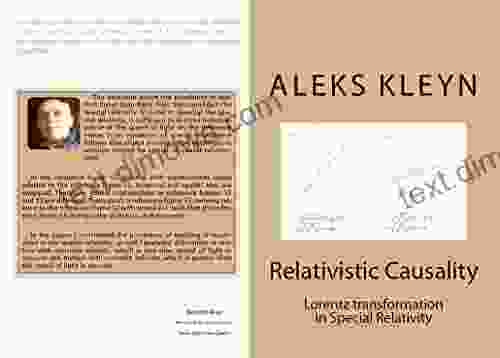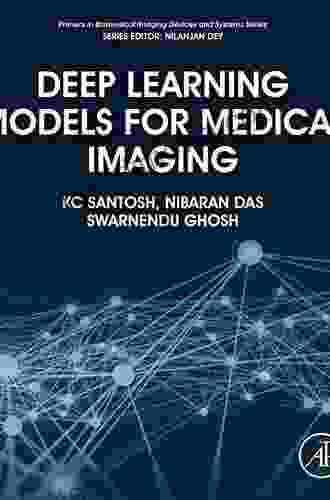Deep Learning Models For Medical Imaging Primers In Biomedical Imaging Devices

Deep learning is a subfield of machine learning that has shown great promise for a wide range of applications, including medical imaging. Deep learning models are able to learn complex patterns in data, and they have been shown to be very effective for tasks such as image classification, object detection, and segmentation.
In this article, we will provide a comprehensive overview of deep learning models for medical imaging, with a focus on their use in biomedical imaging devices. We will discuss the different types of deep learning models, their advantages and disadvantages, and their applications in medical imaging. We will also provide a primer on biomedical imaging devices, and we will discuss how deep learning models can be used to improve the performance of these devices.
Deep learning models are a type of artificial neural network that have multiple hidden layers. These hidden layers allow the model to learn complex patterns in data. Deep learning models have been shown to be very effective for a wide range of tasks, including image classification, object detection, and segmentation.
5 out of 5
| Language | : | English |
| File size | : | 34544 KB |
| Text-to-Speech | : | Enabled |
| Screen Reader | : | Supported |
| Enhanced typesetting | : | Enabled |
| Print length | : | 158 pages |
There are many different types of deep learning models, but the most common types are convolutional neural networks (CNNs) and recurrent neural networks (RNNs). CNNs are designed to process data that has a grid-like structure, such as images. RNNs are designed to process data that has a sequential structure, such as text or speech.
Deep learning models offer a number of advantages over traditional machine learning models. These advantages include:
- Accuracy: Deep learning models have been shown to be very accurate for a wide range of tasks. This is due to their ability to learn complex patterns in data.
- Generalization: Deep learning models are able to generalize well to new data. This means that they can be trained on a small dataset and then used to make predictions on a larger dataset.
- Speed: Deep learning models can be trained very quickly. This is due to the use of GPUs, which are specialized hardware that is designed to accelerate the training process.
Deep learning models also have some disadvantages. These disadvantages include:
- Complexity: Deep learning models are complex and can be difficult to understand. This can make it difficult to develop and debug deep learning models.
- Data requirements: Deep learning models require a large amount of data to train. This can be a challenge for tasks where it is difficult to collect a large dataset.
- Computational cost: Deep learning models can be computationally expensive to train. This can make it difficult to train deep learning models on large datasets.
Deep learning models have a wide range of applications in medical imaging. These applications include:
- Image classification: Deep learning models can be used to classify medical images into different categories, such as normal and abnormal images.
- Object detection: Deep learning models can be used to detect objects in medical images, such as tumors and organs.
- Segmentation: Deep learning models can be used to segment medical images into different regions, such as the brain and the lungs.
- Diagnosis: Deep learning models can be used to diagnose diseases from medical images.
- Treatment planning: Deep learning models can be used to plan treatment for diseases, such as cancer.
Biomedical imaging devices are used to create images of the human body. These images can be used for a variety of purposes, such as diagnosis, treatment planning, and research.
There are many different types of biomedical imaging devices, but the most common types are:
- X-ray imaging: X-ray imaging uses X-rays to create images of the human body. X-rays are a type of electromagnetic radiation that can pass through the body and create an image of the bones.
- Computed tomography (CT) scanning: CT scanning uses X-rays to create cross-sectional images of the human body. CT scans can be used to visualize the bones, organs, and other structures in the body.
- Magnetic resonance imaging (MRI): MRI uses magnetic fields and radio waves to create images of the human body. MRI scans can be used to visualize the soft tissues in the body, such as the brain, heart, and muscles.
- Ultrasound imaging: Ultrasound imaging uses sound waves to create images of the human body. Ultrasound scans can be used to visualize the soft tissues in the body, such as the heart, blood vessels, and muscles.
Deep learning models can be used to improve the performance of biomedical imaging devices in a number of ways. These ways include:
- Image quality enhancement: Deep learning models can be used to improve the quality of medical images. This can be done by removing noise from images, sharpening images, and enhancing contrast.
- Object detection: Deep learning models can be used to detect objects in medical images. This can be helpful for tasks such as diagnosing diseases and planning treatment.
- Segmentation: Deep learning models can be used to segment medical images into different regions. This can be helpful for tasks such as measuring the size of tumors and planning surgery.
- Diagnosis: Deep learning models can be used to diagnose diseases from medical images. This can be done by identifying patterns in the images that are associated with specific diseases.
- Treatment planning: Deep learning models can be used to plan treatment for diseases. This can be done by identifying the best treatment options for a specific patient based on their medical images.
Deep learning models have the potential to revolutionize the field of medical imaging. These models can be used to improve the quality of medical images, detect objects in medical images, segment medical images into different regions, diagnose diseases from medical images, and plan treatment for diseases. As deep learning models continue to develop, we can expect to see even more applications for these models in the field of medical imaging.
5 out of 5
| Language | : | English |
| File size | : | 34544 KB |
| Text-to-Speech | : | Enabled |
| Screen Reader | : | Supported |
| Enhanced typesetting | : | Enabled |
| Print length | : | 158 pages |
Do you want to contribute by writing guest posts on this blog?
Please contact us and send us a resume of previous articles that you have written.
 Book
Book Novel
Novel Page
Page Chapter
Chapter Text
Text Story
Story Genre
Genre Reader
Reader Library
Library Paperback
Paperback E-book
E-book Magazine
Magazine Newspaper
Newspaper Paragraph
Paragraph Sentence
Sentence Bookmark
Bookmark Shelf
Shelf Glossary
Glossary Bibliography
Bibliography Foreword
Foreword Preface
Preface Synopsis
Synopsis Annotation
Annotation Footnote
Footnote Manuscript
Manuscript Scroll
Scroll Codex
Codex Tome
Tome Bestseller
Bestseller Classics
Classics Library card
Library card Narrative
Narrative Biography
Biography Autobiography
Autobiography Memoir
Memoir Reference
Reference Encyclopedia
Encyclopedia Richard Turner
Richard Turner Richard Bradford
Richard Bradford Matt Dunn
Matt Dunn Michael Bane
Michael Bane Sabina Berman
Sabina Berman Mary Johnston
Mary Johnston Matt Johanson
Matt Johanson Mary Cronk Farrell
Mary Cronk Farrell Mary Desilva
Mary Desilva Michelle Zimmerman
Michelle Zimmerman Matthew Helmke
Matthew Helmke Mia Alexander
Mia Alexander Rich Linville
Rich Linville S G Willoughby
S G Willoughby Zack Leonard
Zack Leonard Michael C Barrett
Michael C Barrett Mark Mahon
Mark Mahon Martha Stone
Martha Stone Terry J Wiest
Terry J Wiest Joey Percia
Joey Percia
Light bulbAdvertise smarter! Our strategic ad space ensures maximum exposure. Reserve your spot today!

 Jan MitchellThe Essential Study Guide for Lord Byron's Manfred: Unraveling the Romantic...
Jan MitchellThe Essential Study Guide for Lord Byron's Manfred: Unraveling the Romantic...
 Italo CalvinoUnveiling the Enigma of Time and Space: A Journey into Special Relativity and...
Italo CalvinoUnveiling the Enigma of Time and Space: A Journey into Special Relativity and...
 John Dos PassosThe Basic Beginners Guide To Learn How To Trade For Living Swing Market Tools
John Dos PassosThe Basic Beginners Guide To Learn How To Trade For Living Swing Market Tools Jesse BellFollow ·8.7k
Jesse BellFollow ·8.7k Eugene PowellFollow ·18k
Eugene PowellFollow ·18k Andy ColeFollow ·9.9k
Andy ColeFollow ·9.9k J.R.R. TolkienFollow ·15.1k
J.R.R. TolkienFollow ·15.1k Aldous HuxleyFollow ·4.3k
Aldous HuxleyFollow ·4.3k Henry HayesFollow ·19.8k
Henry HayesFollow ·19.8k Francisco CoxFollow ·19k
Francisco CoxFollow ·19k Arthur C. ClarkeFollow ·11.6k
Arthur C. ClarkeFollow ·11.6k

 Boris Pasternak
Boris PasternakThree Walking: An Immersive Journey into the Heart of...
Immerse yourself in the...

 Connor Mitchell
Connor MitchellUnveiling the Secrets of Archery: Discover "Learnt It...
Archery, an...

 Craig Blair
Craig BlairUnveiling the Secrets of Success: Arrogance Millz Day
Are you ready to unlock...

 Damon Hayes
Damon HayesThe Diary and Letters of America's Minister to France...
In the year 1870, as the...

 Hector Blair
Hector BlairCapoeira: A Journey Through History, Culture, and the...
Origins and...
5 out of 5
| Language | : | English |
| File size | : | 34544 KB |
| Text-to-Speech | : | Enabled |
| Screen Reader | : | Supported |
| Enhanced typesetting | : | Enabled |
| Print length | : | 158 pages |








